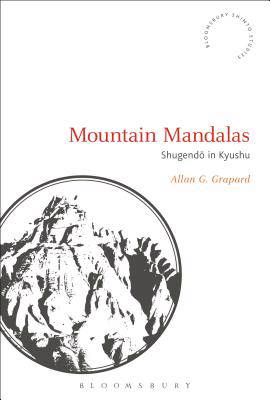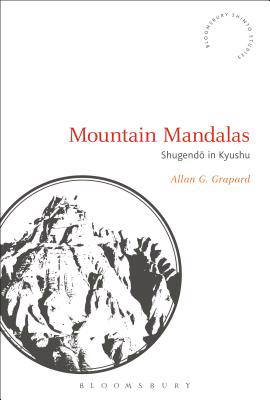
Je cadeautjes zeker op tijd in huis hebben voor de feestdagen? Kom langs in onze winkels en vind het perfecte geschenk!
- Afhalen na 1 uur in een winkel met voorraad
- Gratis thuislevering in België vanaf € 30
- Ruim aanbod met 7 miljoen producten
Je cadeautjes zeker op tijd in huis hebben voor de feestdagen? Kom langs in onze winkels en vind het perfecte geschenk!
- Afhalen na 1 uur in een winkel met voorraad
- Gratis thuislevering in België vanaf € 30
- Ruim aanbod met 7 miljoen producten
Zoeken
€ 88,45
+ 176 punten
Uitvoering
Omschrijving
In Mountain Mandalas Allan G. Grapard provides a thought-provoking history of one aspect of the Japanese Shugendo tradition in Kyushu, by focusing on three cultic systems: Mount Hiko, Usa-Hachiman, and the Kunisaki Peninsula. Grapard draws from a rich range of theorists from the disciplines of geography, history, anthropology, sociology, and humanistic geography and situates the historical terrain of his research within a much larger context.
This book includes detailed analyses of the geography of sacred sites, translations from many original texts, and discussions on rituals and social practices. Grapard studies Mount Hiko and the Kunisaki Peninsula, which was very influential in Japanese cultural and religious history throughout the ages. We are introduced to important information on archaic social structures and their religious traditions; the development of the cult to the deity Hachiman; a history of the interactions between Buddhism and local cults in Japan; a history of the Shugendo tradition of mountain religious ascetics, and much more.
Mountain Mandalas sheds light on important aspects of Japan's religion and culture, and will be of interest to all scholars of Shinto and Japanese religion. Extensive translations of source material can be found on the book's webpage.
This book includes detailed analyses of the geography of sacred sites, translations from many original texts, and discussions on rituals and social practices. Grapard studies Mount Hiko and the Kunisaki Peninsula, which was very influential in Japanese cultural and religious history throughout the ages. We are introduced to important information on archaic social structures and their religious traditions; the development of the cult to the deity Hachiman; a history of the interactions between Buddhism and local cults in Japan; a history of the Shugendo tradition of mountain religious ascetics, and much more.
Mountain Mandalas sheds light on important aspects of Japan's religion and culture, and will be of interest to all scholars of Shinto and Japanese religion. Extensive translations of source material can be found on the book's webpage.
Specificaties
Betrokkenen
- Auteur(s):
- Uitgeverij:
Inhoud
- Aantal bladzijden:
- 320
- Taal:
- Engels
- Reeks:
Eigenschappen
- Productcode (EAN):
- 9781350044937
- Verschijningsdatum:
- 24/08/2017
- Uitvoering:
- Paperback
- Formaat:
- Trade paperback (VS)
- Afmetingen:
- 156 mm x 234 mm
- Gewicht:
- 449 g

Alleen bij Standaard Boekhandel
+ 176 punten op je klantenkaart van Standaard Boekhandel
Beoordelingen
We publiceren alleen reviews die voldoen aan de voorwaarden voor reviews. Bekijk onze voorwaarden voor reviews.









